The Concept
The Math
The Box
The Cowl
The Tops
1. Buy 4" 90° PVC plumbing connectors
2. Cut off to form cowls
3. Measure and cut box parts
A, 2 tapered ends
B. a short side and a tall side
C. cut a dam for the center
D. cut drain scuppers in tall side and ends
4. Glue box together making sure dam is in correct position (13 square inch opening at top
5 . Coat box with epoxy.
6. Make tops
A. Make simple frame that fits over boxes
B. Glue on 4mm top (discover it's a mite thin)
C. Make and glue a reinforcing block of 9mm over one end of top
D, Drill holes in edge to hold tee nuts and install tee nuts
E. Buy socket head cap screws and plastic thumb screw ends and press together
F. Drill 4" hole in top
G. Buy a 10' length of 4" PVC tube and cut it into proper length
H, Cut tubes on a bias to increase air flow and divert water. Drill small hole in tube that aligns with top so a screw can be inserted through tube and into top from the inside. This will help brace the tube when you twist the cowls on and off.
I. Fit cowls and tubes together and glue tubes in making sure you don't get glue on cowls. Use #8 bolts as spacers to raise the cowl slightly
J. Fill in gaps around tube/top connection from both directions
K. Drill two small holes in the cowl base front and back to pin them in place facing in either direction
L. Drill a corresponding hole in the outward facing face of the tube
M. Buy stainless steel cotter pins and stainless split rings and assemble
N. Paint interior of cowls and tubes with PVC paint.
O. Buy 4" PVC caps from hardware store. Note: all raised markings were sanded off cowls and caps prior to painting
P. Paint exterior of caps and cowls with 2 coats of PVC paint and 2 coats of hammered paint.
Q. Touch up overspray to cowl interior (yet to do)
R. Epoxy coat prime and paint tops
7. Screw in thumb screws of tops to indent bottoms and mark where they align and carve out an area for the thumb screws to attach the tops securely
8. Epoxy coat boxes and paint when we paint the decks
9. See? It's easy.........................................
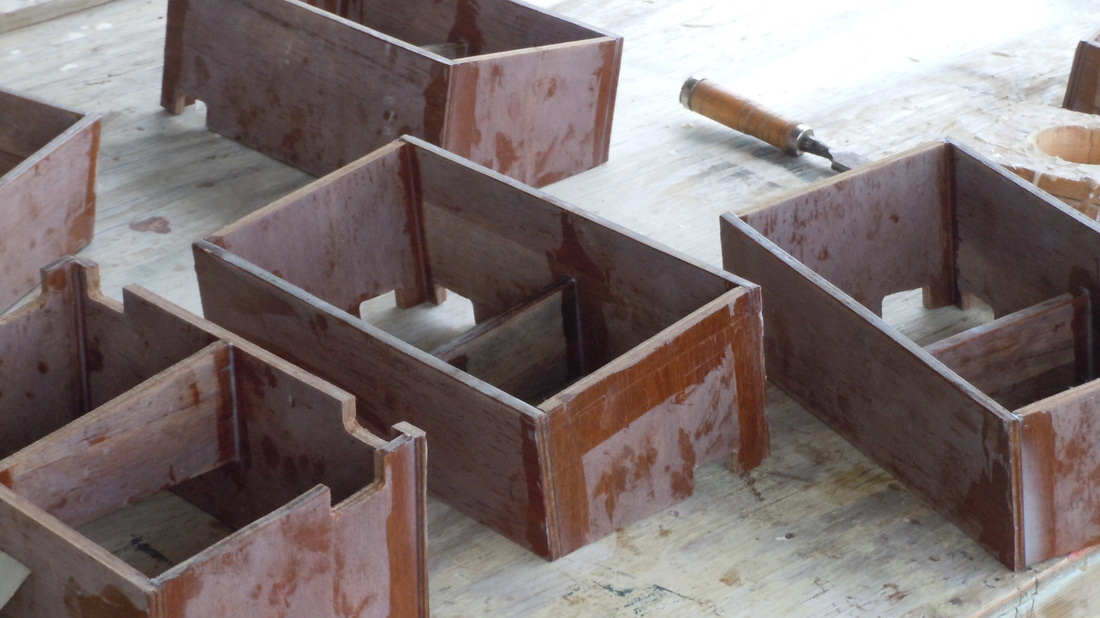
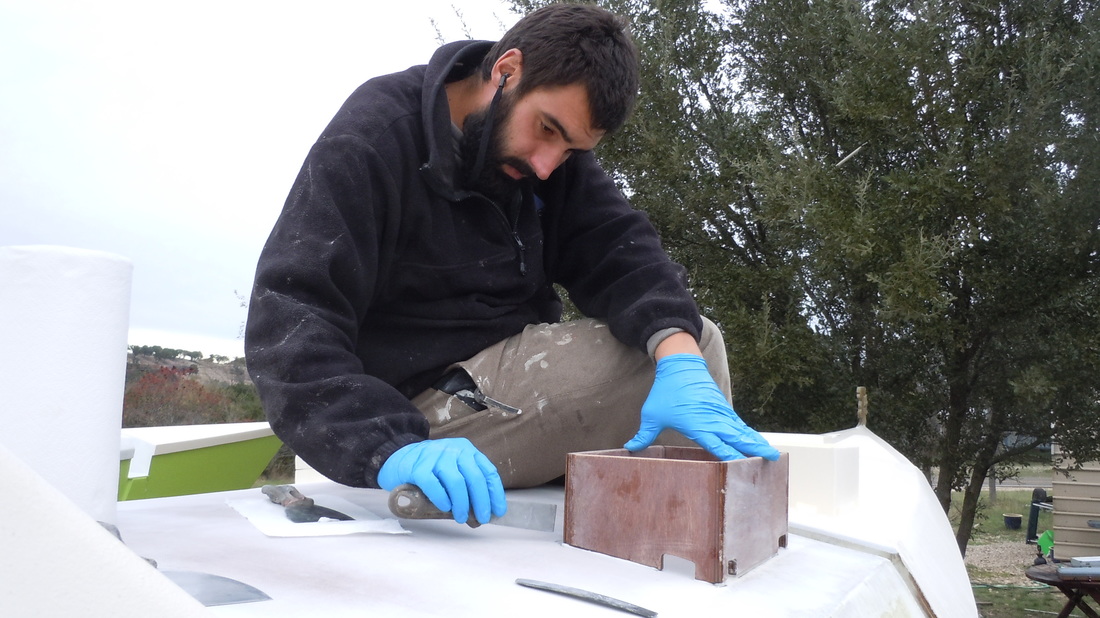
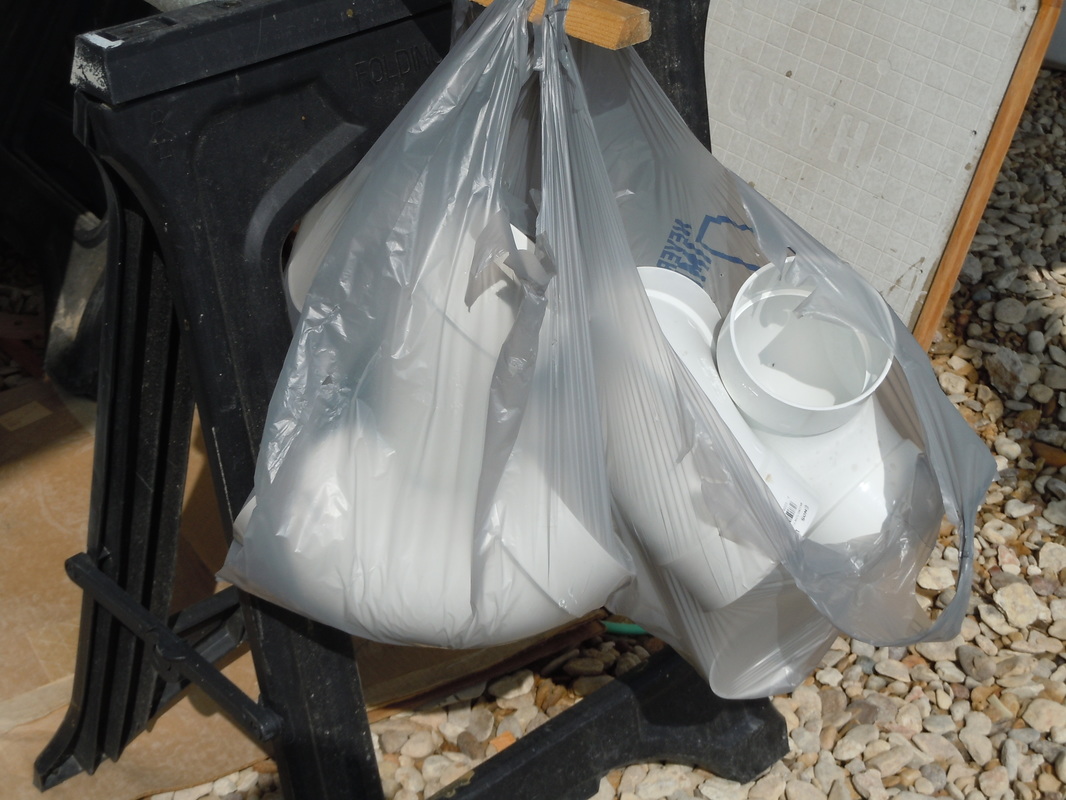
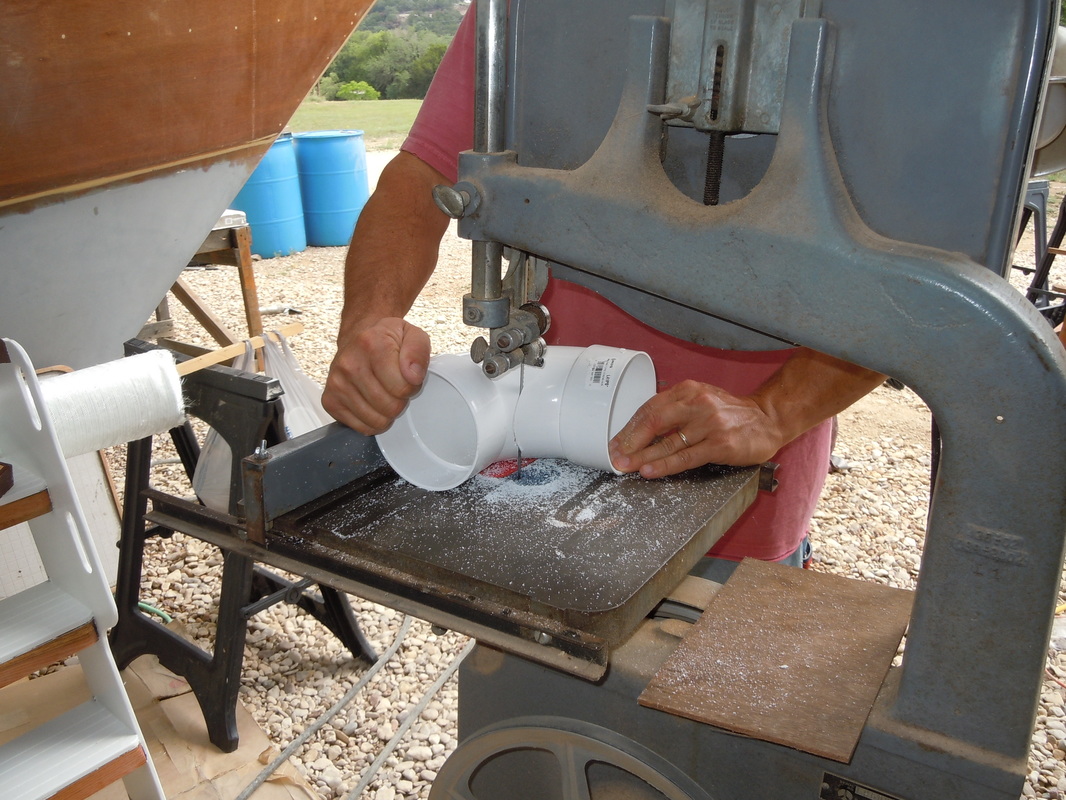
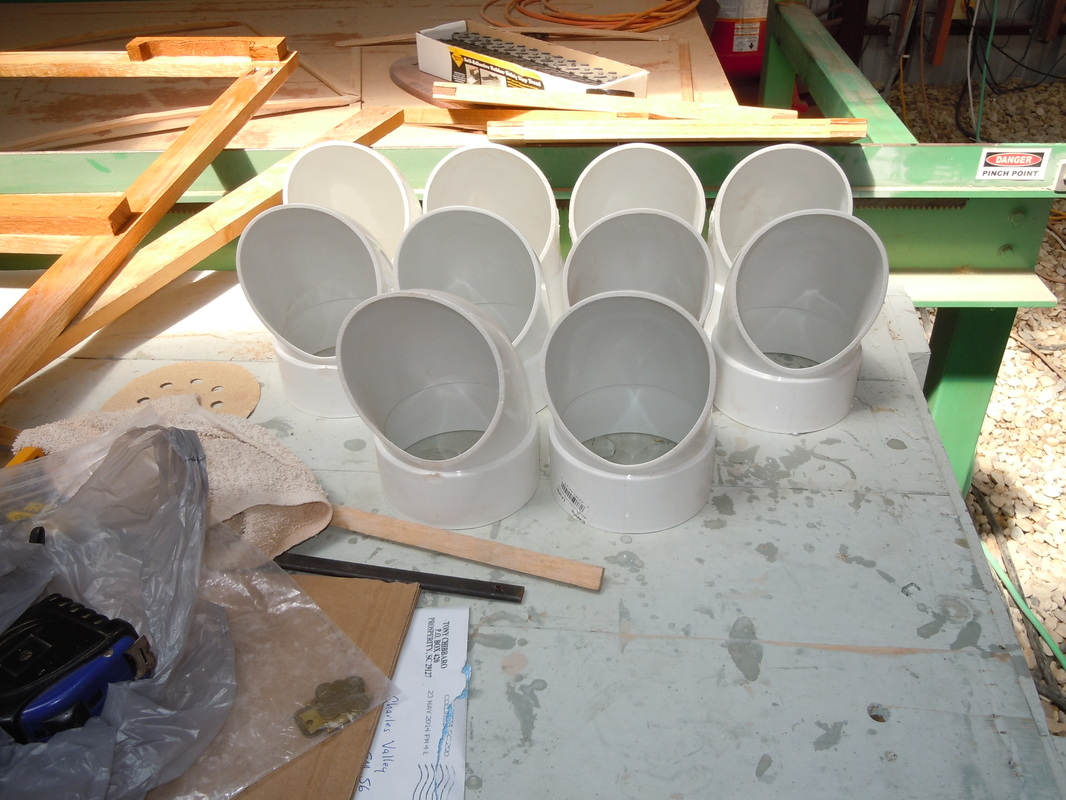
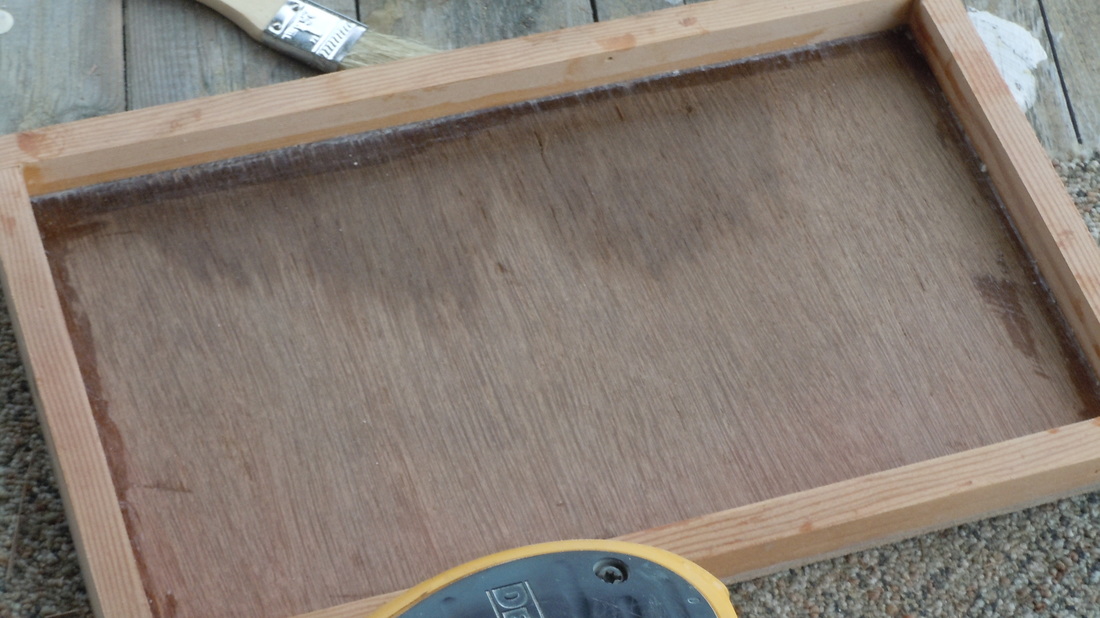
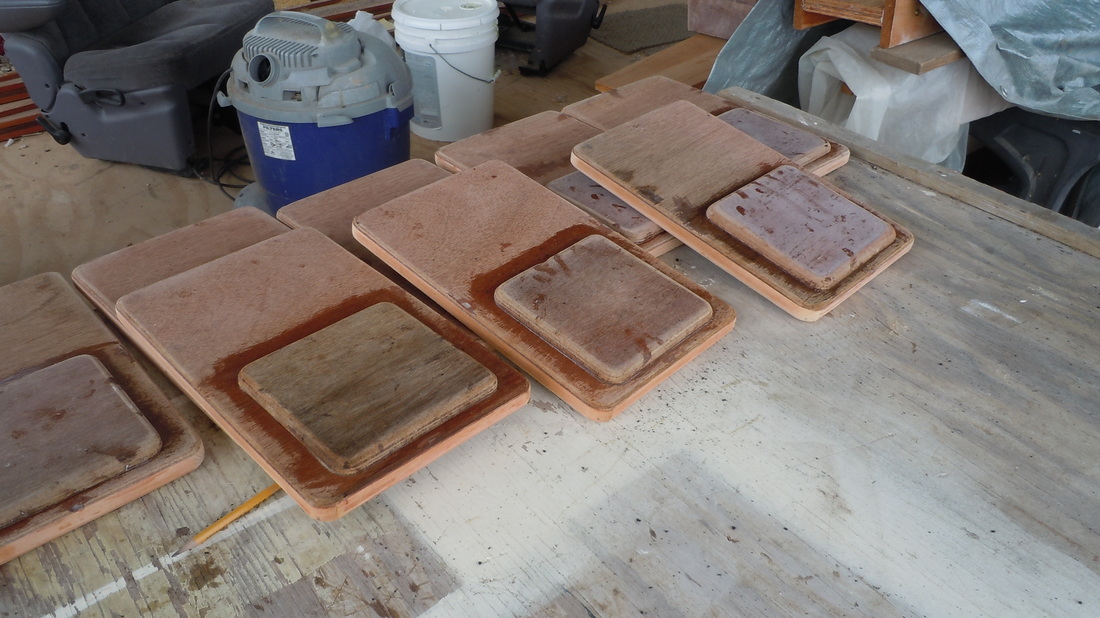
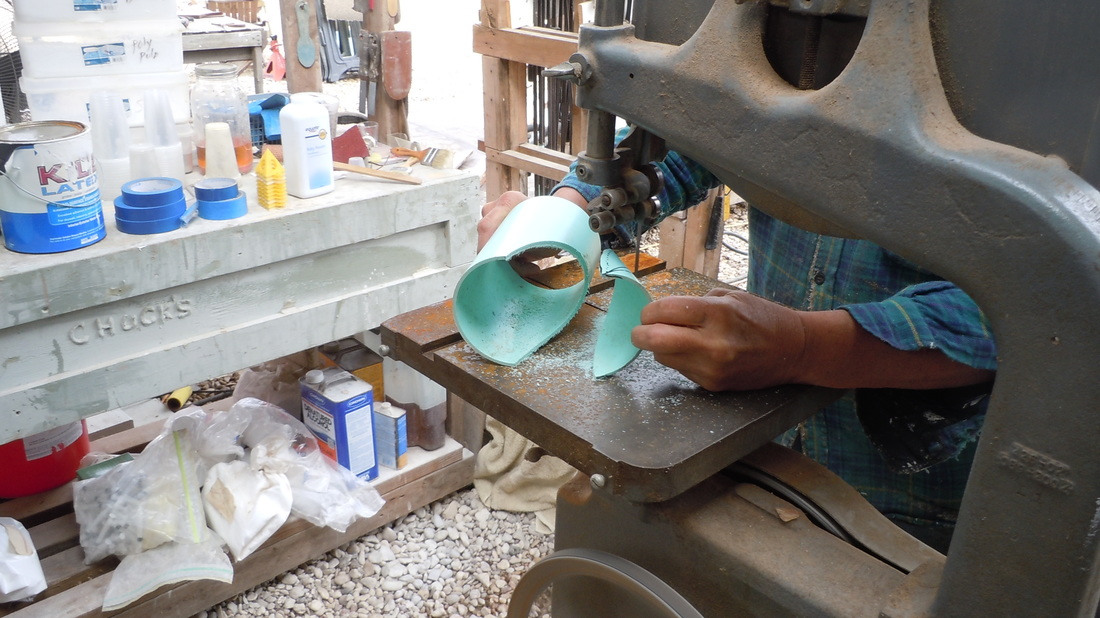
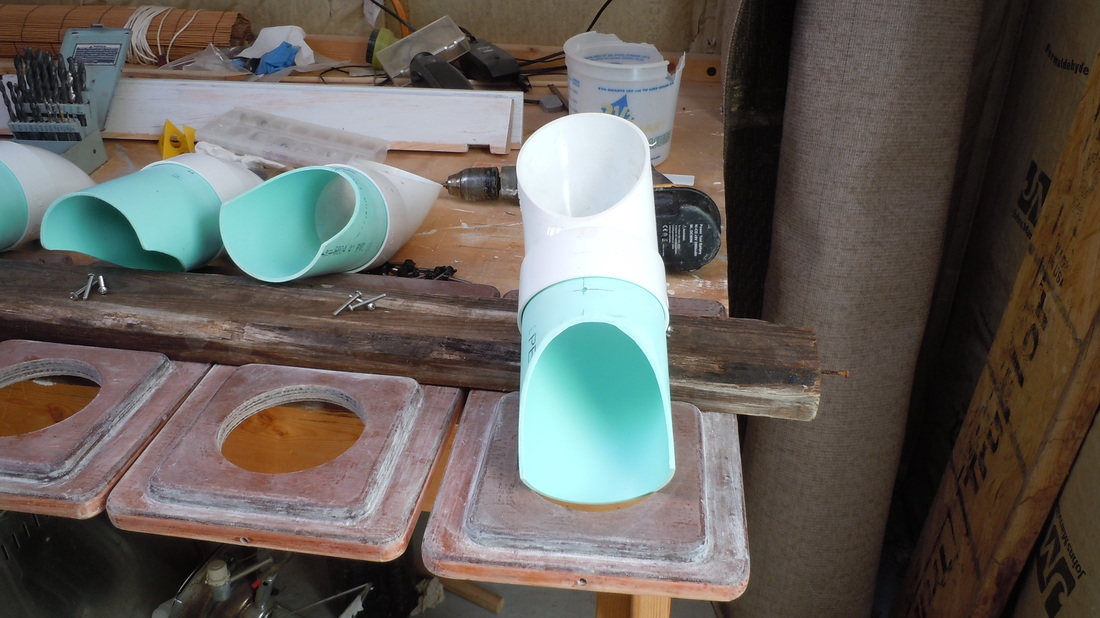
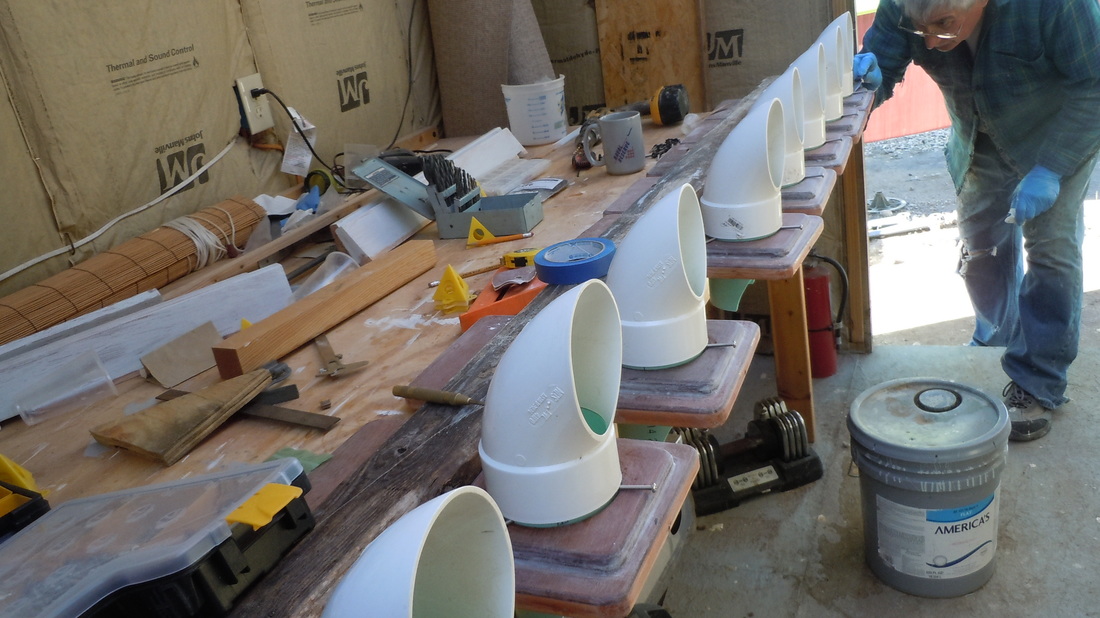
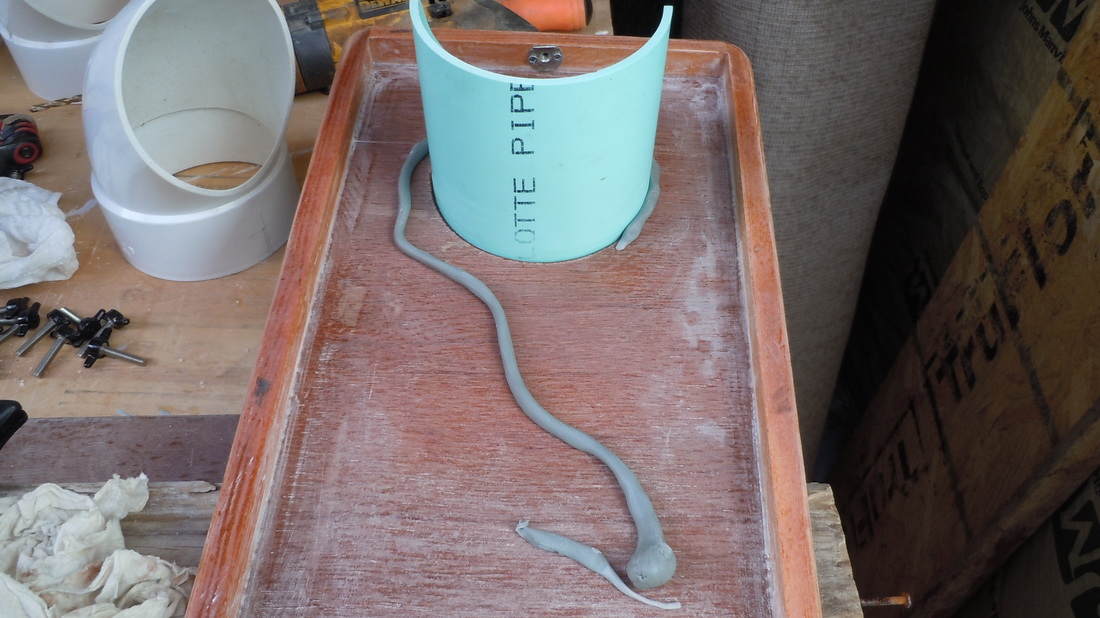
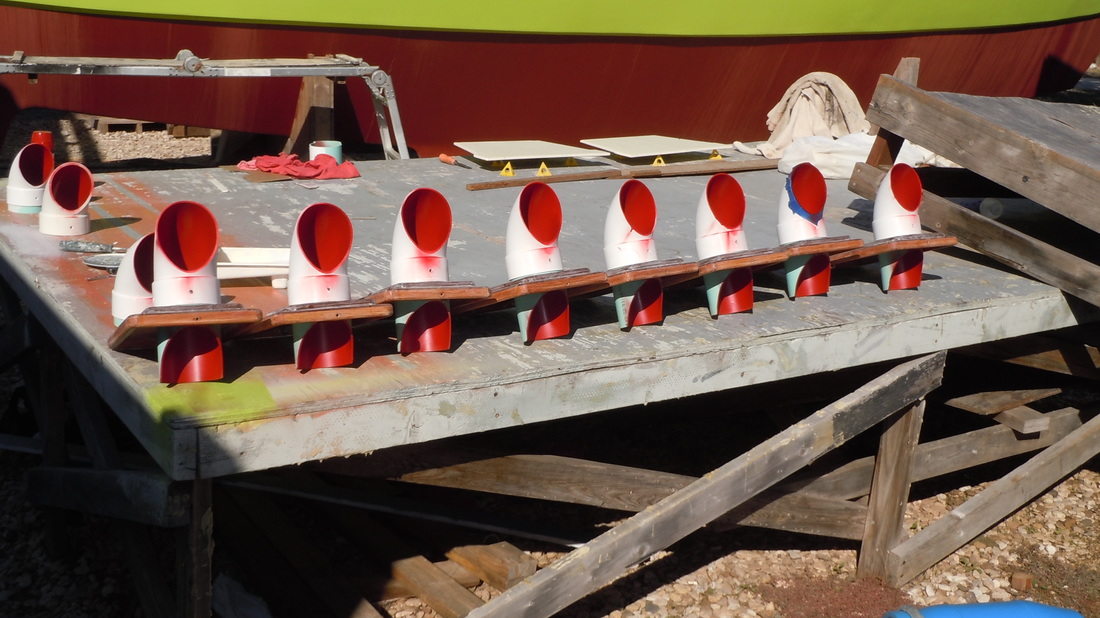
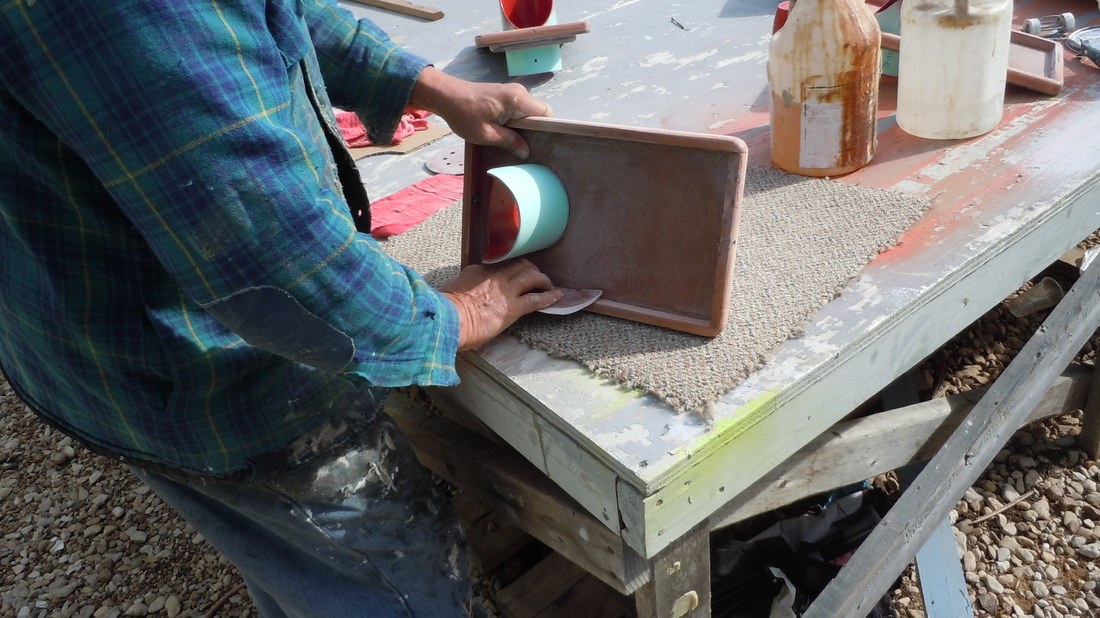
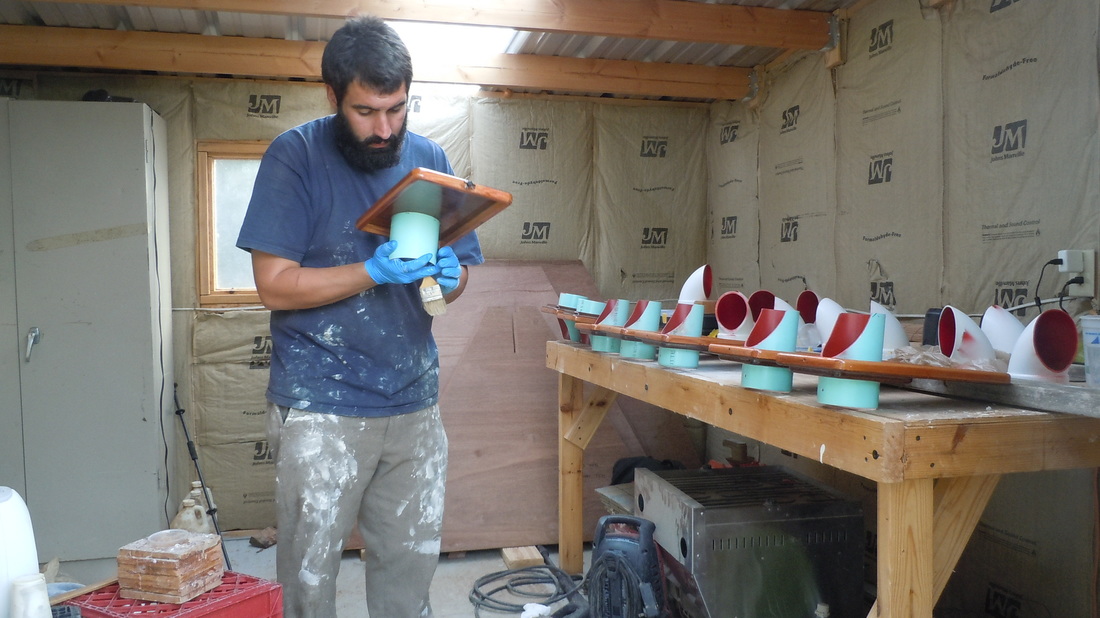
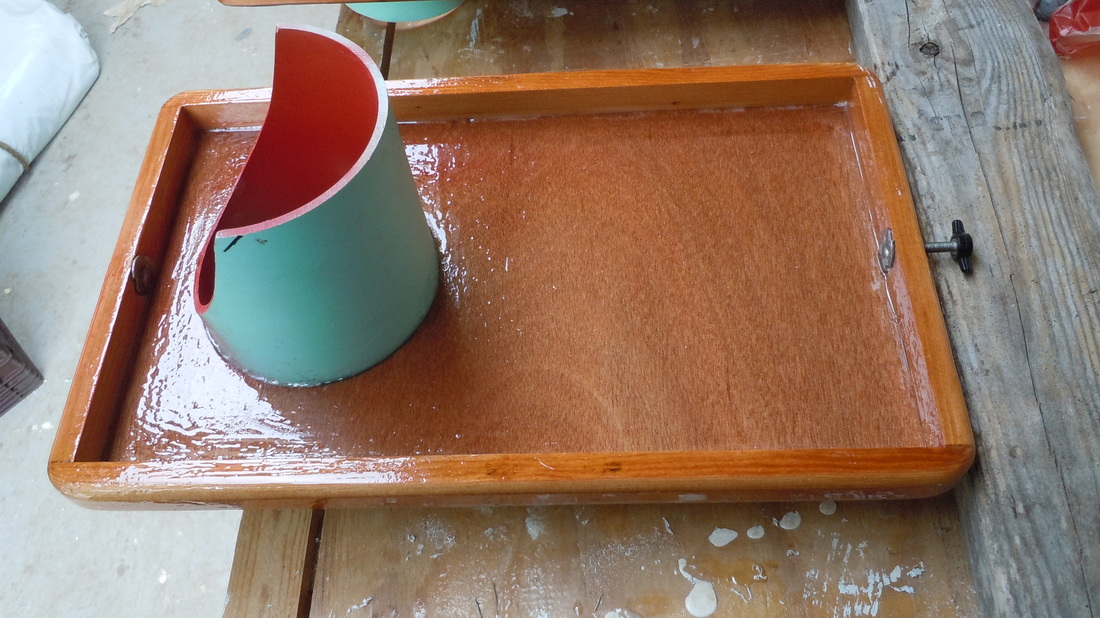
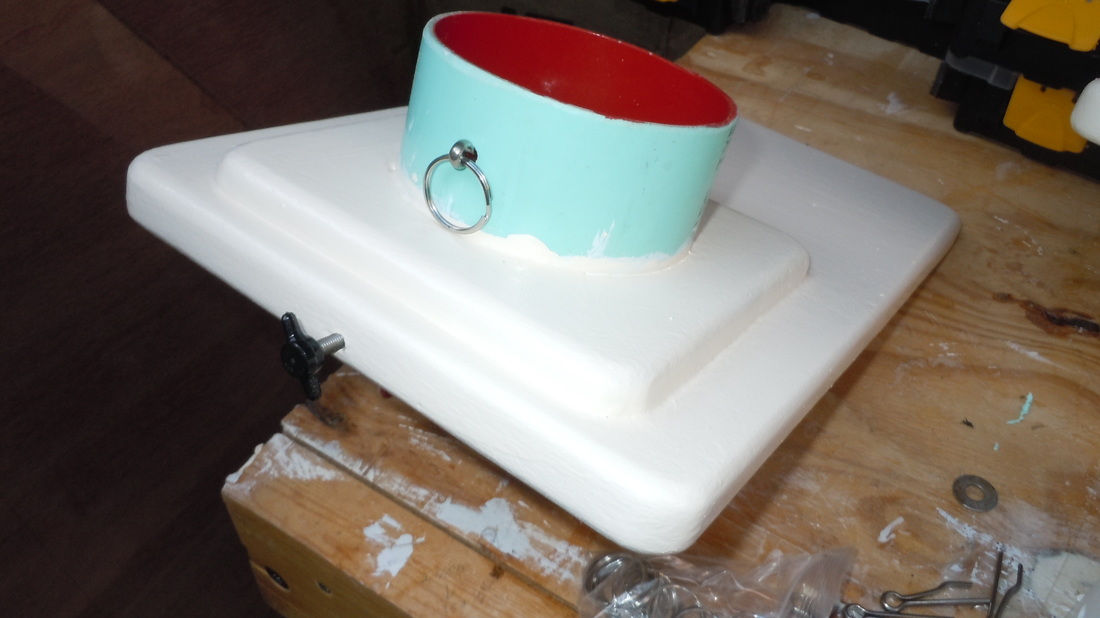
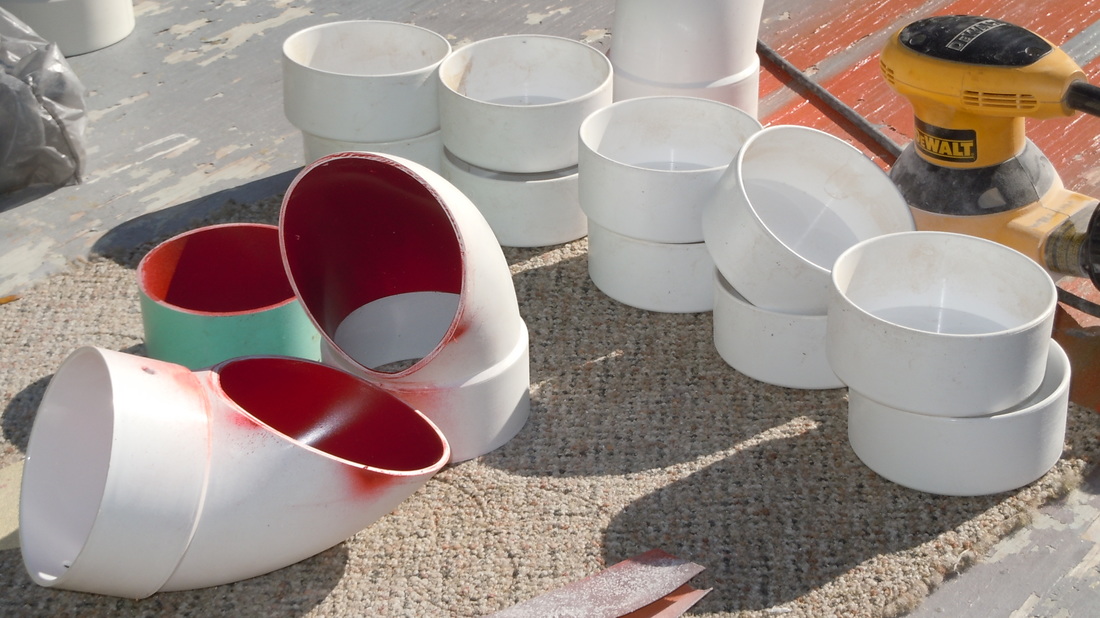
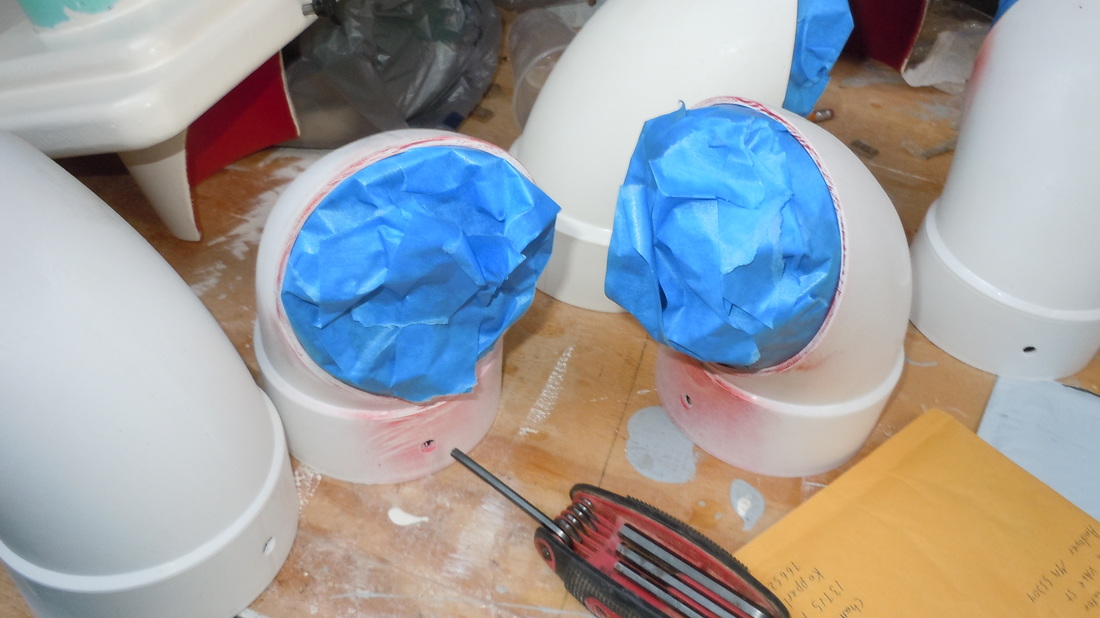
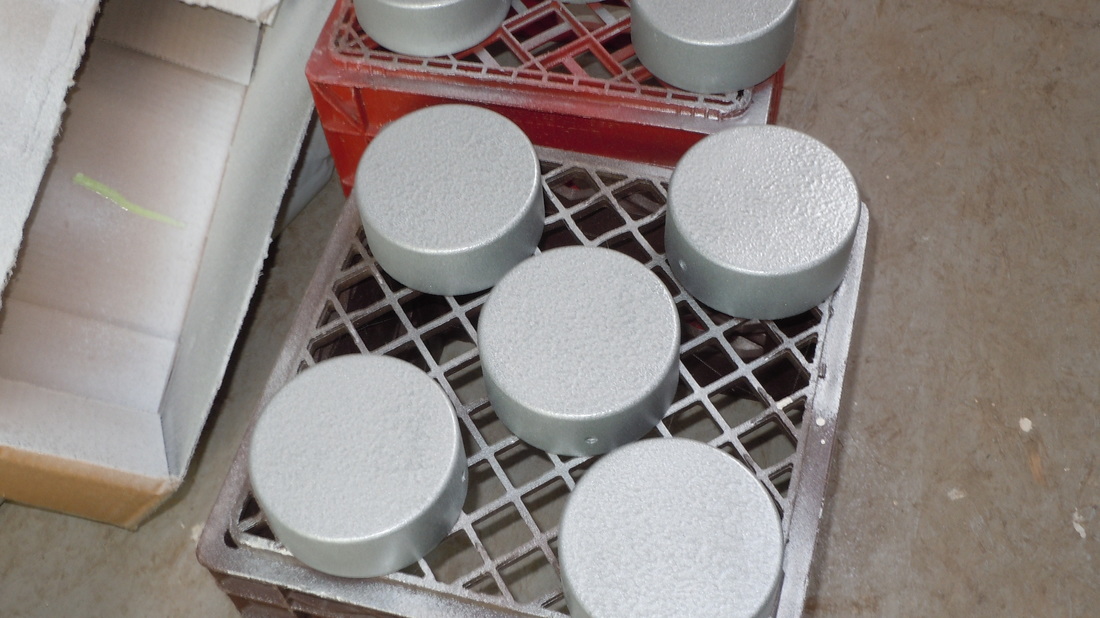
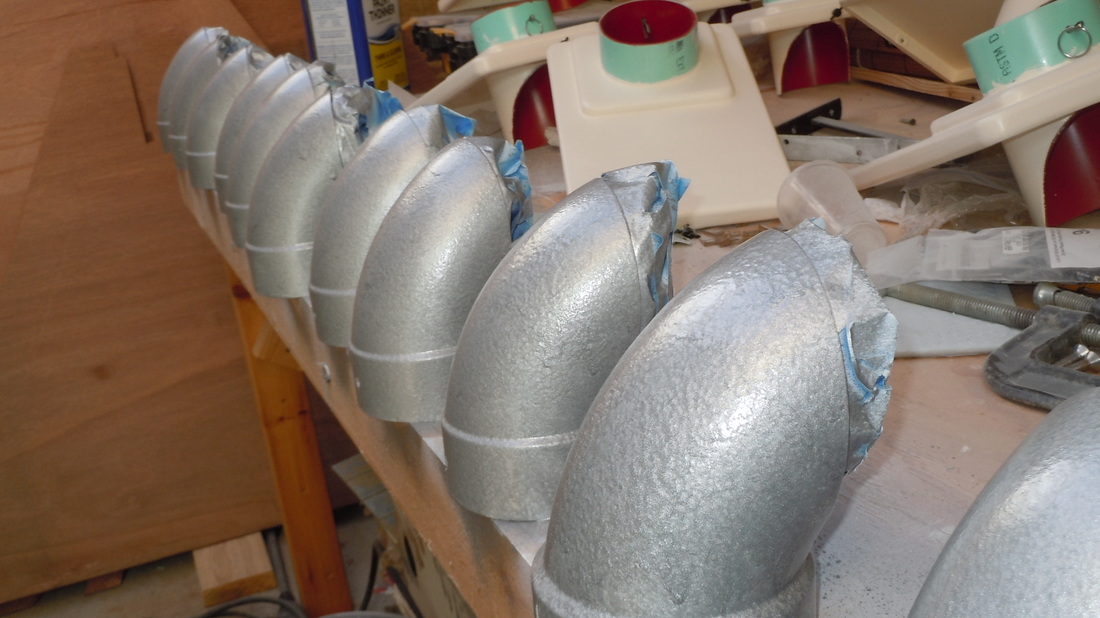
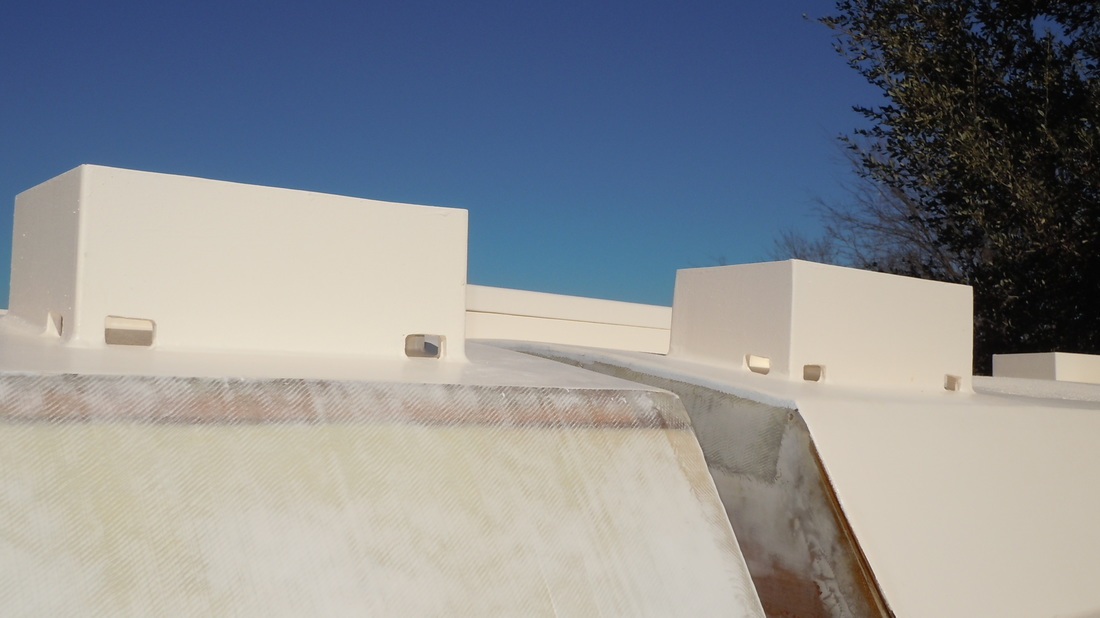
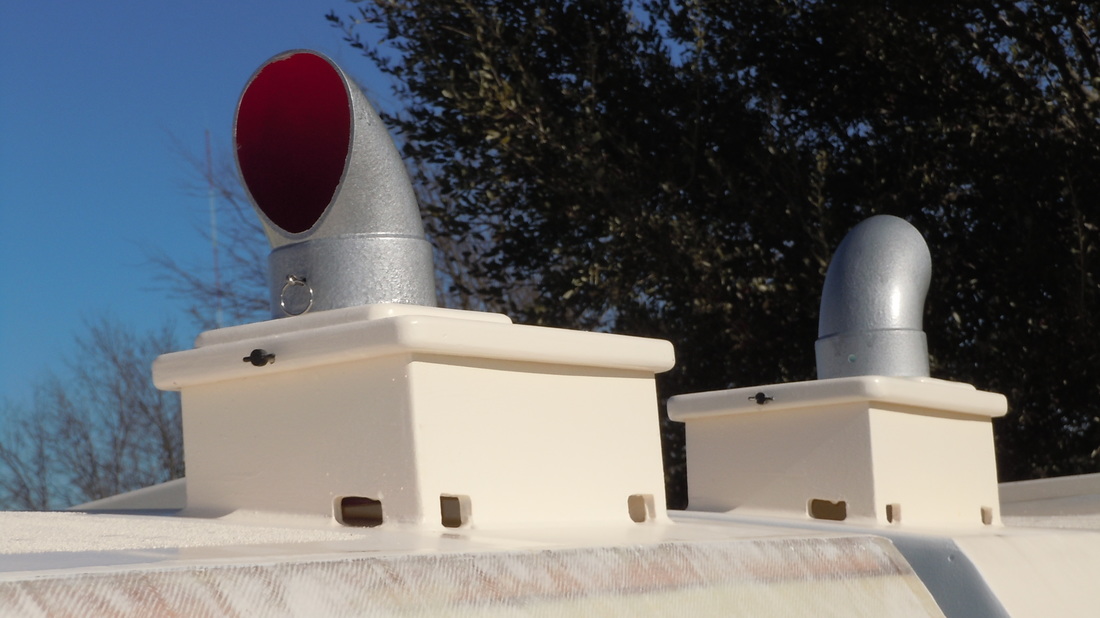
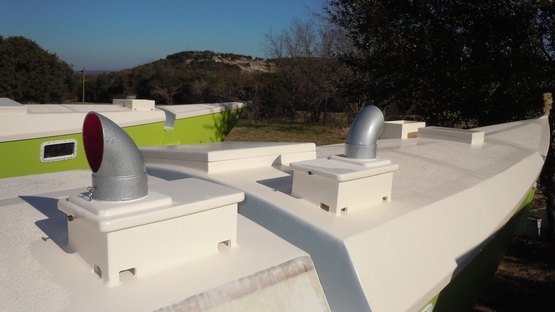
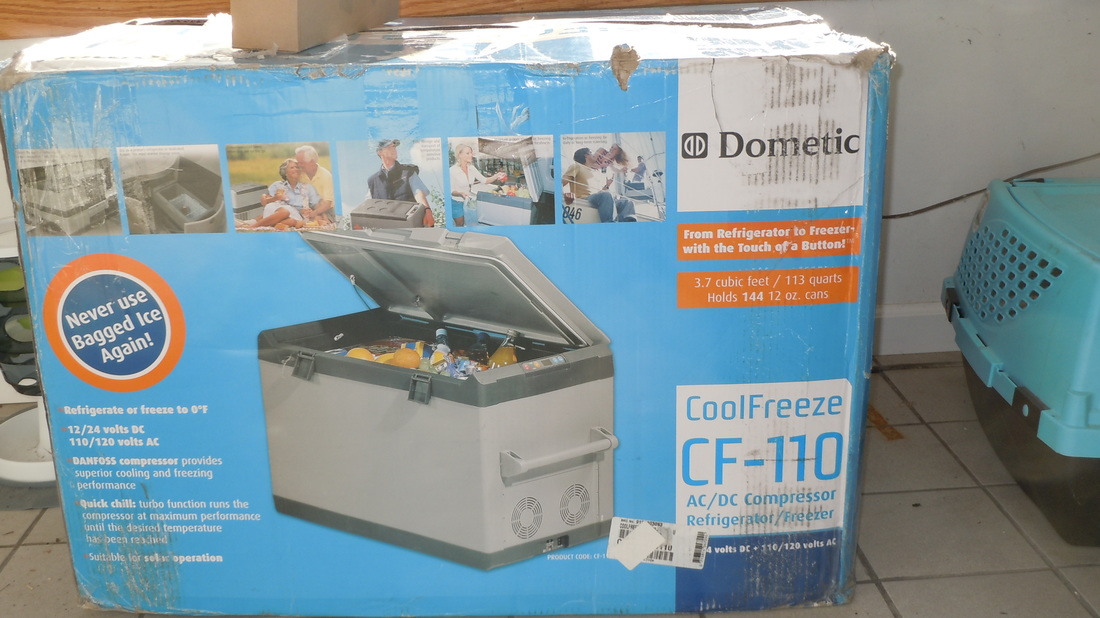
 RSS Feed
RSS Feed
